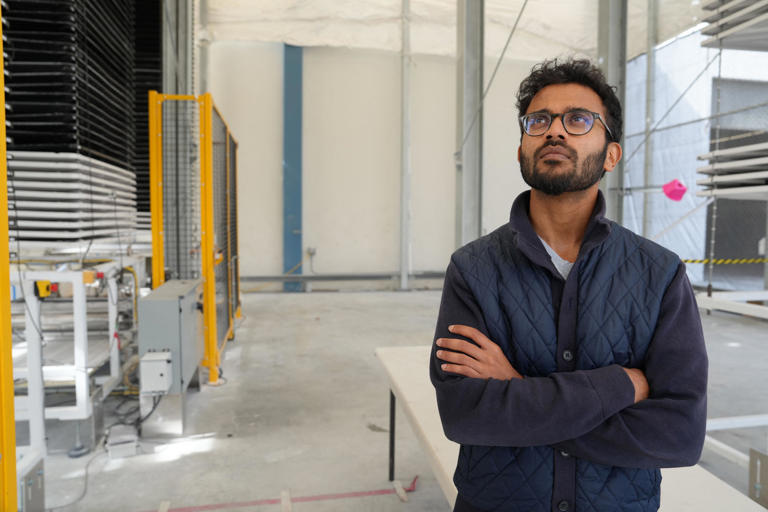Story by insider@insider.com (Maiya Focht)

Carbon dioxide released into the atmosphere is contributing to our planets warming. Reuters/Aly Song© Reuters/Aly Song

Carbon dioxide released into the atmosphere is contributing to our planets warming. Reuters/Aly Song© Reuters/Aly Song
The first US industrial carbon capture plant just opened, according to the New York Times.
It grabs carbon from the air and traps it in concrete or sends it into the ground.
This technology could help us stall climate change, but the facility is still relatively small.
California is now home to a new weapon in the war against climate change.
On Thursday, Heirloom Carbon Technologies opened its facility in Tracy, CA. The company said it's the first commercial plant in the US to pull carbon from the air, the New York Times reported.
As it stands now, the plant is capable of sucking 1,000 tons of carbon dioxide out of the atmosphere per year, which is roughly equal to the exhaust released from 200 cars, the Times reported.
That means current operations are relatively small, but the company has plans to expand. Shashank Samala told the Times that they want to get to millions of tons per year by building more factories like this.
Grabbing carbon like a sponge

Shashank Samala, co-founder and CEO of Heirloom Carbon, at the company headquarters in Brisbane, California. JENN CAIN/Getty Images© JENN CAIN/Getty Images
Heirloom uses direct air capture technology, which essentially means that its product is able to suck free carbon dioxide out of the air, according to its website.
The company does this by "using limestone like a sponge." The facility processes limestone, removing the carbon dioxide from it, which turns it into a fine white powder, called calcium oxide.
Water is then added to the calcium oxide, and the resulting mixture is spread out on metal trays exposed to the open air, where it absorbs carbon dioxide from the atmosphere and turns back into limestone, per the Times.
The facility can then use the limestone it just produced to start the process again, "like repeatedly wringing a sponge," according to Heirloom's website. The captured carbon dioxide gets packed into concrete or injected into the ground, where Heirloom said it's held permanently.
This whole process is powered by renewable energy, and the company has publicly pledged to not accept investments from oil and gas companies, the NYT reported.
Why they made this tech in the first place
Excess carbon dioxide in the atmosphere traps heat and warms the planet. If we keep adding carbon dioxide into the atmosphere, experts say we're headed to a future with higher sea levels, more frequent natural disasters, and fewer healthy human lives.
A recent report from the World Wildlife Fund and Boston Consulting Group found that if we continue using fossil fuels at current rates, there'll be the equivalent of 211 million years of human life lost or lived with disability in the year 2050, alone.
So it's crucial to reduce the amount of greenhouse gasses we're releasing. By removing some of the carbon dioxide we've already released, it could help us halt climate change even sooner.
"The science is clear: Cutting back carbon emissions through renewable energy alone won't stop the damage from climate change," Secretary of Energy Jennifer Granholm, told the Times. "Direct air capture technology is a game-changing tool that gives us a shot at removing the carbon pollution."
Carbon capture is not a cure for climate change
Using carbon capture alone won't be a cure-all for our climate woes. To avoid a hotter future, we need to rapidly reduce our dependence on fossil fuels, according to the WWF report.
Further, some experts are wary of carbon capture, like climate scientist Peter Kalmus.
Kalmus told Insider in 2021 that pollutive companies might promote investments in carbon capture to distract the public from the amount of fossil fuels they're actively releasing into the air. This mirrors a popular sentiment about carbon offsets.
"Fossil-fuel companies love carbon capture because it really does let them off the hook," he said.
No comments:
Post a Comment